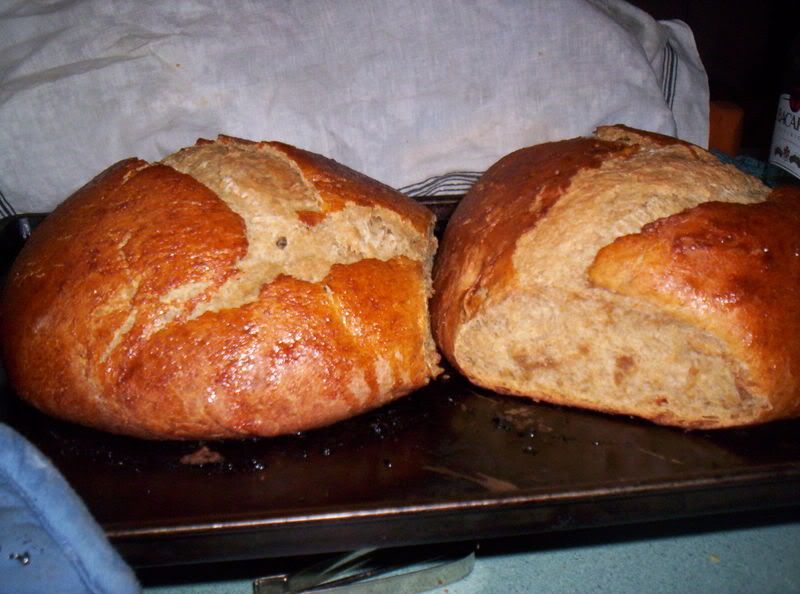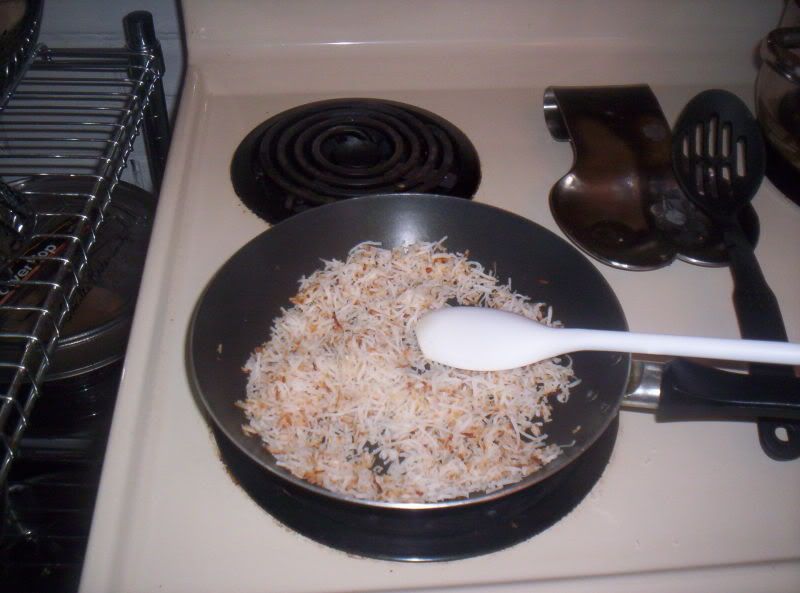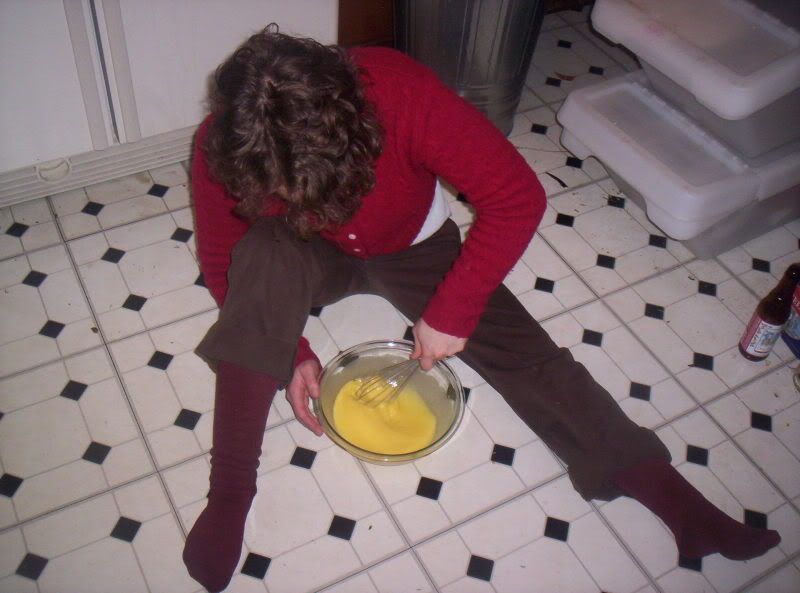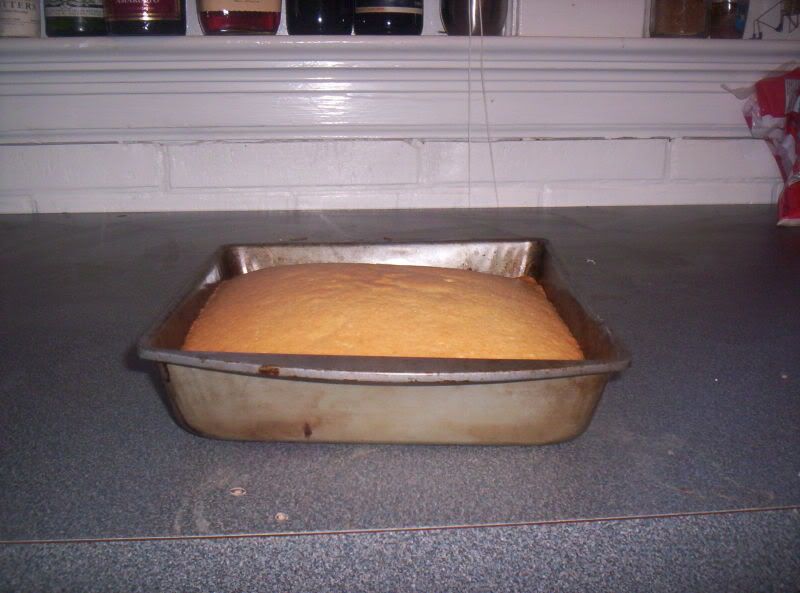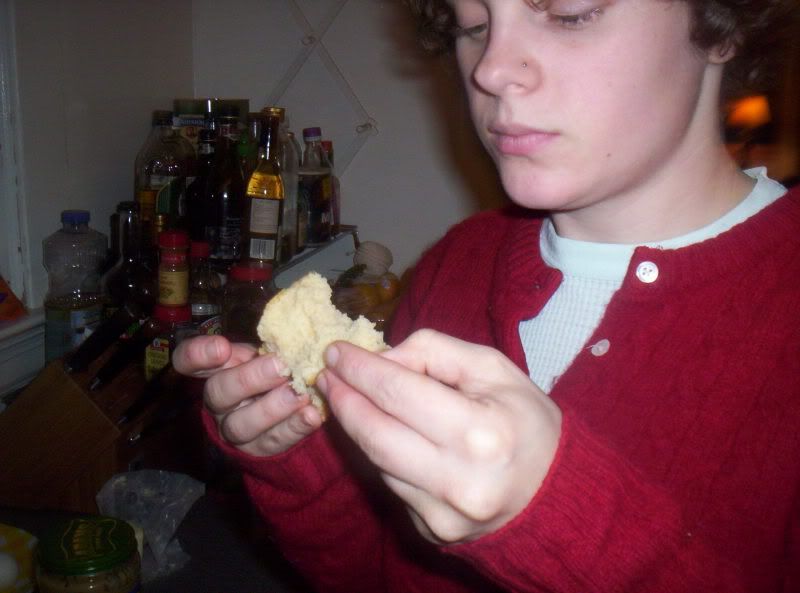Wait, don't run away; it's easy, I promise! If you've never made risotto before, I'm here to help.
When I think of risotto, I think of love. It is a dish that is made with care (compared to boxed mac and cheese), and is almost always appreciated by those you make it for. Since the end product has such a rich and creamy consistency, risotto is made with a special kind of rice, instead of long-grain, as it needs a high starch variety that is able to absorb a lot of liquid and release said starch. Arborio is the type I see most often in grocery stores, but there are certainly other kinds of rice (and real Italians would probably have some opinions).
Step 1: Heat up some oil or butter in a medium saucepan over medium heat. Add 1 cup of rice and stir to coat the grains with the fat and cook for a minute or two. (Meanwhile, heat up about 2-3 cups of stock in a separate pot and keep it hot for later steps. If I'm lazy I'll just zap some stock in a large pyrex measuring cup for liquids, and continue zapping it to maintain temperature. Adding hot liquid to the cooking rice is important in maintaining the overall temperature of the cooking environment; adding cold stock will halt the absorption process until everything can come back up again, and we want to avoid rollercoasters.)
Step 2: Add a good slosh of white wine to the rice. It doesn't have to be great, I usually just use the token mostly-consumed bottle hanging out in the fridge. Stir occasionally until the wine is absorbed.
Step 3: Add about 1 cup of hot stock to the rice. Stir every few minutes. You will get a better product if you stand there and stir more frequently, but for everyday purposes I don't think it's necessary. The purpose of stirring is to loosen starch molecules from the surface of the rice grain and distribute it into the liquid component (stock), allowing the rice to uniformly absorb more liquid and release more starch. This is where the creamy consistency develops.
*A note about heat: you want the risotto to be ever so slightly bubbling, but definitely not boiling. Barely simmering. Otherwise a gooey burnt-on fate awaits!
Step 4: Continue stirring until the liquid is mostly absorbed. Add another cup of hot stock. Continue stirring until almost absorbed.
Here is the judgement call. It is traditional to cook the risotto for 17 minutes total since the wine was absorbed. This results in a grain that still has "bite" to it, and is al dente. In Italy, a finished risotto is supposed to be "looser," that is, the grains are surrounded by more liquid, than is typically served in the US. Some advocate for the risotto to be removed from the heat a few minutes before it is done and covered so that it can finish by residual heat. Depending on your palate, you may want the grains softer, or what have you.
If you don't have a lot of experience, I recommend finishing it yourself, so being involved with it until you think it's ready, instead of covering it up early and hoping for the best. You might have to taste it a lot, but sometimes we have to make delicious sacrifices. Buck up.
Step 5: Once you've decided it's ready, remove from heat and add a few pats of cold butter and some finely grated parmesan (or other similar cheese), and stir it all in. Yum! I like to add some more cheese on top when I'm about to dig in.
Variations exist as far as the eyes can see. Meat, no meat, veggies, herbs. Another "kitchen sink" medium. I usually sauté some finely chopped onion or mushrooms in the bottom of the pot before I add the uncooked rice. You can add things along the way, or wait to stir it all in at the end. In pictured rendition above, I roasted some cauliflower (drizzle of olive oil, salt and pepper, 350 degree oven until lightly browned), chopped it up, and added it to the risotto towards the end. I also added some sage, because I'm going through a slight obsession with this herb at the moment. Also, check the salt! Depending on the stock you've used, the risotto can use a lot of extra salt.
The one hairy thing about risotto is that it should be eaten as soon as possible after you've deemed it done! You definitely don't want it sitting around because it will continue to cook and dry out. This is why risotto at large-scale catered events are usually so gluey-horrible!
Hope this guide helps! Here's a final rundown of the recipe components in case you don't like the stream-of-consciousness:
Roasted Cauliflower and Sage Risotto:
1 cup arborio rice
1 cup white wine
2 cups vegetable stock
1/2 yellow onion, finely chopped
1 medium head cauliflower, coarsely chopped, and roasted in 350 degree oven
1 tsp dry rubbed sage
butter
parmesan cheese, finely grated





